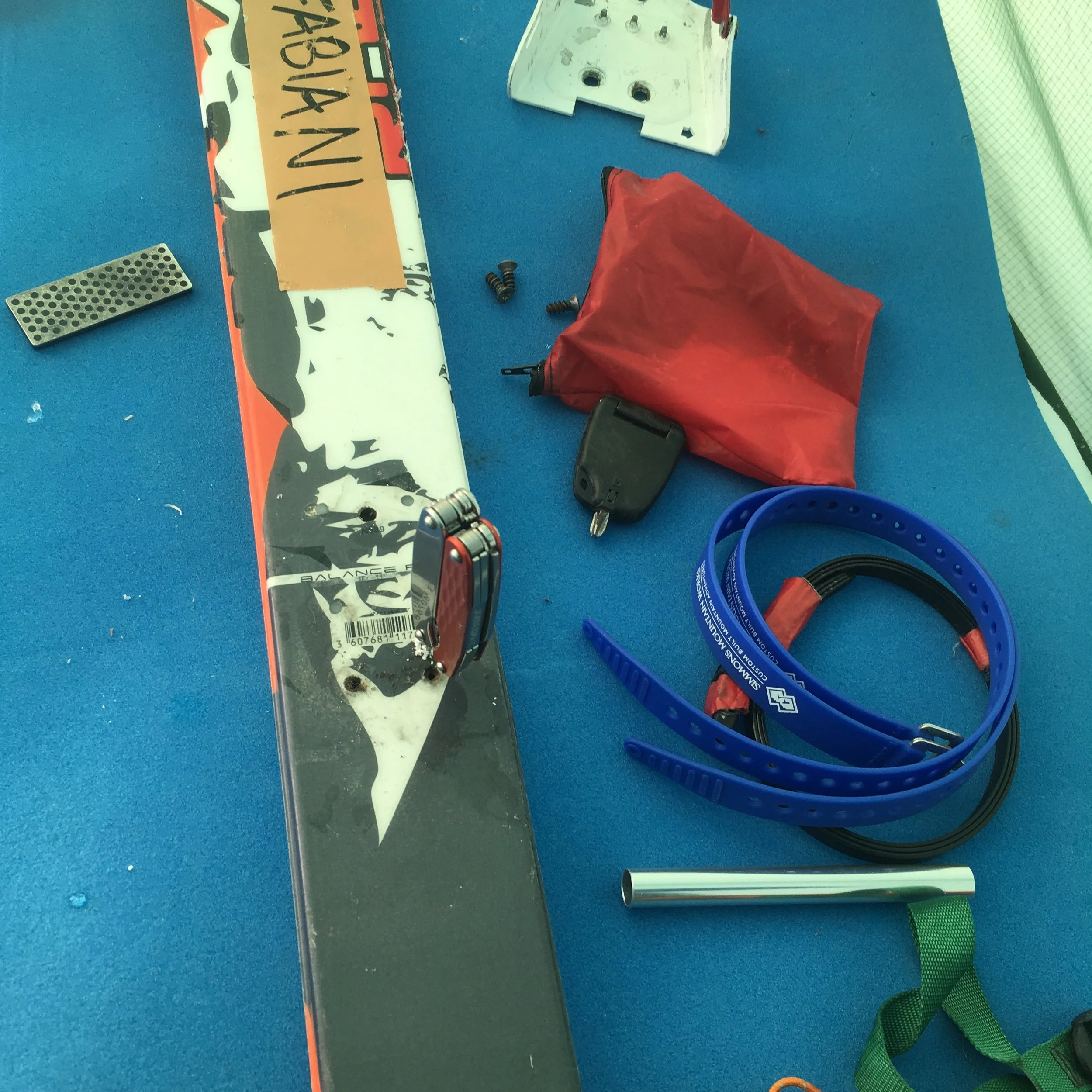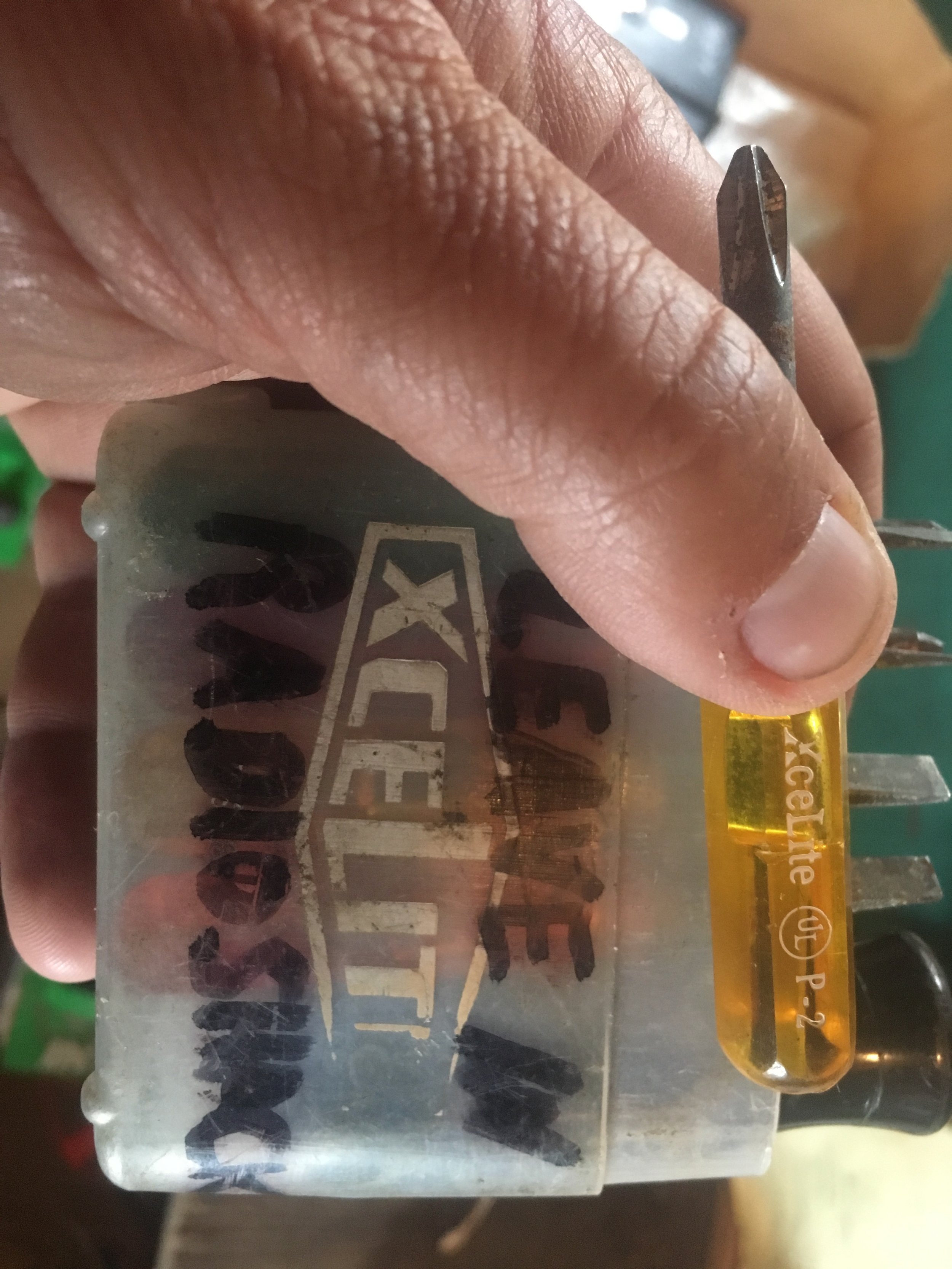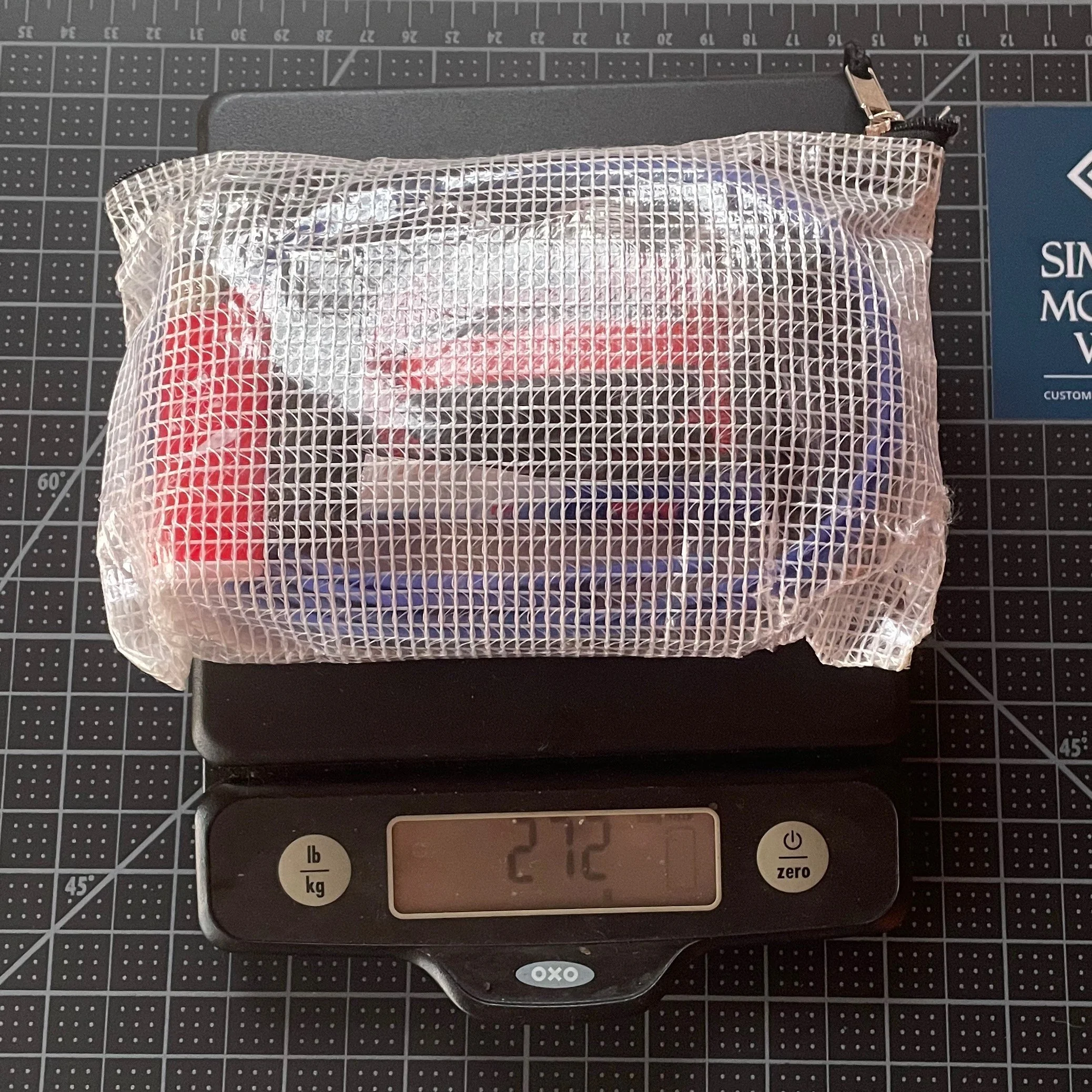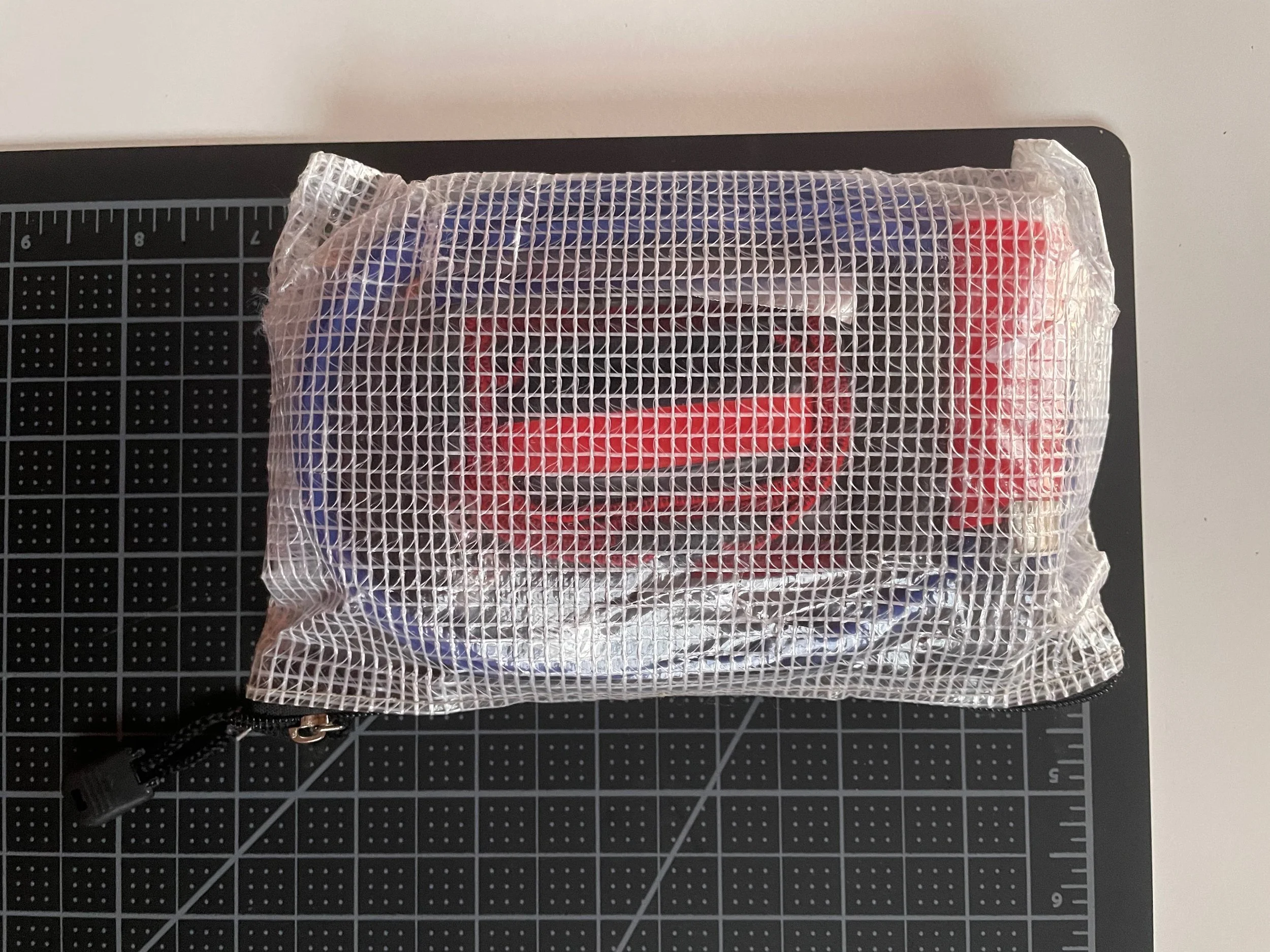Gear Ideas: Ski Repair Kits
Backcountry skiers can be obsessive-compulsive about what gear they use. They obsess about the weight of their bindings, the volume of their skins, the insulation of their jackets, the weight-versus-flex of their boots.
I should be saying “we” instead of “they” because I’m no different. Guides may even be worse, because guides are heading out day after day. And guides’ risk and obligations mean we have to carry more robust first aid and repair kits than most recreational skiers and riders. I thought a comparison of my guiding versus my personal repair kits, and reasons for those differences, might be an interesting read.
My Guiding Ski Repair Kit
3”x3” sheet of aluminum (7.5cm x 7.5cm)
1” hose clamps (2.5cm) x 2
Ski pole basket
5’ accessory cord (1.5m)
225lbs zip ties (100kg) x 3
3’ of 16 gauge wire (1m)
2” safety pins x 2
Boot cuff threaded rivet
Multi-tool
Lighter
Diamond file
5’ gorilla tape (1.5m)
1” bicycle tube bands x 2
20” strap with buckle
Headlamp
EDC Key Screwdriver with 2” socket adapter; PH4, PZ3, T20 bits; mini nut tool
Tent pole splint
20” Voile strap x 2
Now compare this to my personal repair kit.
My Personal Ski Repair Kit
3”x3” sheet of aluminum (7.5cm x 7.5cm)
Headlamp
1” bicycle tube bands x 2
Lighter
5’ gorilla tape (1.5m)
G3 Backcountry Binding Tool
20” Voile strap x 2
Huge difference, eh? So why is my guiding repair kit so much more?
Honestly, it’s because my guest’s are more likely to loose baskets, to break boots or bindings. It’s understandable - we tend to see ski equipment like other recreational equipment, and use it until it wears out. Problem is, it doesn’t wear out gradually - it wears out suddenly, catastrophically. Things break suddenly, and go from working to not working. So I have to carry quite a bit of kit just to effect enough repairs to limp out - and to date, I’ve repaired one telemark binding, one boot buckle, two boot cuff rivets, two toe bindings, and three heel bindings. I’ve splinted two ski poles and replaced countless pole baskets. I’ve adjusted countless bindings and tightened numerous screws.
What I have noticed is that my friends and I are not as willing to have “mission critical” pieces of equipment break in the field, and we replace things like our avalanche transceivers, boots, and bindings more often. I can also accept a little bit more personal risk on a personal tour than when I’m guiding - what I call my “risks and obligations” are simply different when I’m out skiing with friends than when I’m out with guests. Also, my partners all carry lightweight repair kits too - so altogether, 2 or 3 of us should have more than enough kit to fix whatever ails us. When I’m guiding, I’m usually carrying the only repair kit.
So my personal kit can actually be quite a bit smaller than my guiding kit. And its a significant difference:
So my Guiding Ski Repair Kit is 541gm, and my Personal Ski Repair Kit is 184gm: literally 1/3 less in weight.
What does this mean? Well, I do think if everyone was carrying a lightweight repair kit (and likewise a lightweight first aid kit), then every team would have enough kit for one significant repair. I think it’s a valuable conversation to have with your ski partners.
Here’s some more information about some pieces.
3”x3” piece of aluminum (7.5cm x 7.5cm). Simply cut from can of Red Bull. Wrapped around the fracture, then two hose clamps, tape, or a ski strap to clamp it all down in place.
Ski Pole Baskets. 80% seem to be threaded like Black Diamond models. People often don’t attach their baskets correctly, so all of my spares I’ve found on the trail. I typically find a spare basket necessary once or twice a season.
Boot cuff threaded rivet. I simply asked my favorite ski shop tech at my favorite ski shop.
Bicycle inner tube bands, AKA Ranger bands. These burn extremely well once lit and make awesome fire starters. They also make ok rubber bands.
EDC Key Screwdriver from CountyComm.com. I bought a 2” socket extension for standard 1/4” bits; 3 bits - a PH4, PZ3, and T20. This is lighter than any binding buddy tool. CountyComm has a lot of interesting gear to check out.
G3 Backcountry Binding Tool. With a PZ3 on one end and a T20 on the other, this tool will deal with 80% of all the screws in use and weighs 1/2 of what my EDC Key Screwdriver set does.
Headlamps. Replacing batteries are always inconvenient. I found it just easier to have a spare headlamp, and worry about replacing batteries later.
Simmons Mountain Works Voile ski straps. Ski straps have 1001 uses. 20” are my favorite length - long enough to be useful for repairs, short enough for everyday use, like holding skis together.
Philips Head #4, Pozi Drive #3, and Torx #20 (PH4, PZ3, and T20), 2” socket adapter, hose clamps, zip ties, 16 gauge wire, and duct tape can be bought from any hardware store.
Accessory cord, multi-tools, headlamps and tent pole splints can be bought from your local outdoor store or REI.






















